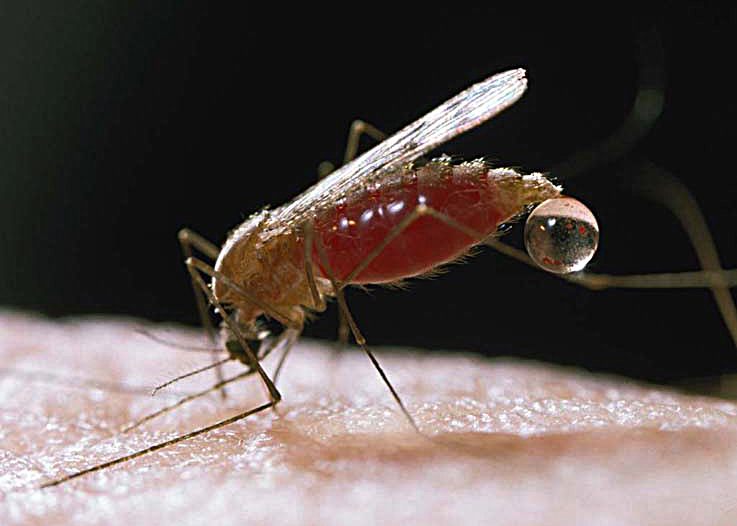Vector abatement district would monitor, control mosquito
populations
Most people dislike the buzzing, biting mosquitoes that gather
around still water and come out at dusk and dawn during warm
months. But before moving forward with a vector control district,
the San Benito Board of Supervisors needed to know how many
property owners would be willing to pay to control them
– and how much.
Vector abatement district would monitor, control mosquito populations
Most people dislike the buzzing, biting mosquitoes that gather around still water and come out at dusk and dawn during warm months. But before moving forward with a vector control district, the San Benito Board of Supervisors needed to know how many property owners would be willing to pay to control them – and how much.
Aside from the nuisance of mosquitoes and other vectors, many of them pose a public health risk. Various species spread illnesses that can be deadly to humans. One concern in California is West Nile Virus. The disease has mild cold-like symptoms in most people, but can be fatal or paralyzing in a few cases.
The disease has spread in recent years, with 54 counties of 58 counties in California reporting virus cases in mosquitoes, horses, birds or humans. San Benito had only one reported case of an infected bird in 2006.
“It is difficult to have a clear crystal ball to predict vector services required down the road,” said Reb Monaco, District 4 supervisor. “But I don’t see [vectors] going away.”
The county has paid for mosquito abatement services this year out of the general fund through grants from the state. The grants, however, are a temporary offering and may not be available next year. To create a permanent fund for mosquito services, the Board has decided to implement a special benefit assessment.
All property owners in a district pay a yearly fee. The services include destroying larvae pools and monitoring mosquito infestations.
Before moving forward with an assessment, the Board approved a consulting group to survey the county to see if residents supported the fee back in July.
At a recent board meeting, supervisors received a presentation from SCI Consulting Group. The company has helped multiple California counties establish vector abatement districts. For their research, the consultants divided the county into two zones. Zone A includes property north and West of Tres Pinos. Zone B includes most of the South County lands south and east of Tres Pinos.
Of 8,600 surveys sent out, they received 1,800 responses.
Comments from respondents listed public health as the No. 1 reason to support the assessment. Those surveyed also supported environmentally safe prevention methods. The biggest reason not to support it was that residents didn’t want a new tax.
The consultants found much stronger support in zone A and support for a fee between $8 to $10. Residents in zone B did not support an assessment. The drier portion of the county has fewer mosquito issues due to less standing water. The northern part of the county has more standing water from creeks, rivers and sewer ponds.
“The restriction is funds generated in zone A cannot be used in zone b,” said Matt Fore, a registered environmental health specialist for San Benito County. “We could still work in zone b, but it needs to be funded through the general fund.”
Jaime De La Cruz, District 5, stated that services should not be provided to zone B at the expense of taxpayers.
“If zone B doesn’t want [the services] why should taxpayers pay for the services they don’t want?” he asked.
But Fore pointed out that in a public health situation, the county would be responsible for providing services to the entire county.
“The budget for zone B is already included in department budgets,” Fore said. “It is in the budget for Environmental Health and the Agricultural Commission.”
He stressed that even the assessment in zone A would be a preventative budget.
“This is baseline prevention to keep larvae from becoming adults,” Fore said. “It wouldn’t cover a large-scale adult outbreak.”
The consultants made clear the assessment district boundaries could be altered and the fee could be lowered as things change in the future. But vector problems disappearing is unlikely.
“In the last 25 years, we have had a 50-fold increase in vector-transmitted disease,” Monaco said. “We are one of the few counties that does not have a vector control. We have been fortunate not to have an outbreak.”
Melissa Flores can be reached at mf*****@**********ws.com.










